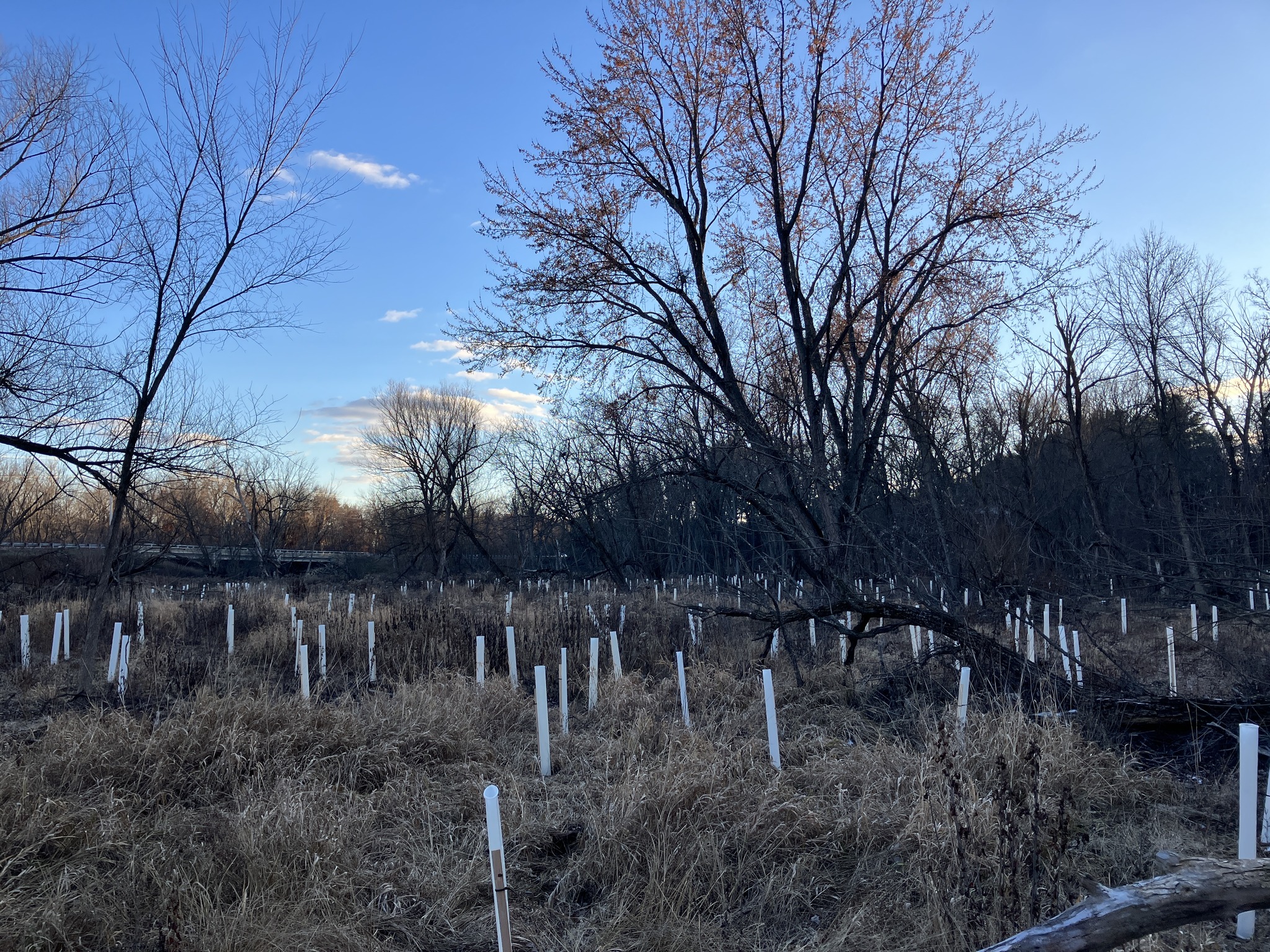What is going on near Valley Creek?
Traveling south on St. Croix Trail from Lakeland to Afton is a pleasurable thing. The landscape gently rolls by with small areas of native prairie grasses waving in the wind, and wetlands dotting either side of the road.
If you have driven by Oxbow Trails lately, you may have noticed a strange sight! The floodplain forest seems to have been taken over by an alien invasion! Tall white tubes project from the ground in large masses — it’s rather a startling sight! So what are those white tubes?

So, what are those white tubes?
The white tubes are called tree tubes. They mark the location of newly planted native tree and shrub species that are specific to a floodplain forest habitat. The tubes protect these vulnerable plants from wind and the browsing activities of rabbits, mice and deer. Floodplain forests are important for mitigating flood impacts and reducing erosion, as well as providing habitat for amphibians, invertebrates and even fish!

What’s the history of this site as it relates to Belwin?
Belwin Conservancy purchased this 19-acre site south of Valley Creek in the mid 2000’s in part to help protect the water quality of the Creek.
Overgrown with non-native plant species the land was ready for a major restoration effort. An assessment revealed that this area had floodplain forest, a pine stand, an oak savanna and former prairie that was inundated with buckthorn, honeysuckle, reed canary grass, and Kentucky bluegrass (to name a few)! Work began in earnest in 2022 to remove all inappropriate plant species and begin to reclaim the native habitats.
What will this site be used for?
In 2018 Belwin met with leadership from Anishinabe Academy to explore partnership opportunities. The idea of having a space for students and families to come to learn traditional cultural and ecological practices was warmly embraced and in 2022 the first students came out for a day of experiential learning. Belwin is happy to report that at the end of 2023 over 400 student visits and 10 family events have occurred.

Will the tubes be there to stay?
Large scale land restoration takes time and lots of effort to get to the desired outcome of a self-sustaining habitat. On-going activities will include checking the tubes to make sure the plants are growing well and removal when the plant can support itself from natural stressors. While the tubes themselves are not natural and look out of place, they are an important and integral piece of the restoration effort.
To maximize the success of this restoration, 1000 shrubs and trees were planted (with another 1000 coming in the spring) that include: red-osier dogwood, silky dogwood, cottonwood, chokecherry, highbush cranberry, sandbar willow and red maple. Survival of the fittest is nature’s rule, so while not all the plantings will survive, Belwin is hoping that enough will thrive to create a sustainable, healthy, functioning floodplain forest.

Attend an upcoming event with Lynette as your guide! Visit our events page for more information.

Funding for this project was provided by the Minnesota Environment and Natural Resources Trust Fund as recommended by the Legislative-Citizen Commission on Minnesota Resources (LCCMR).